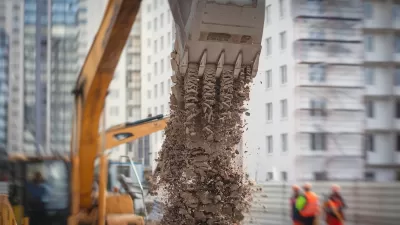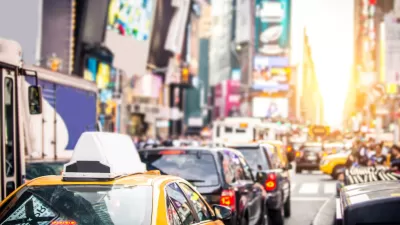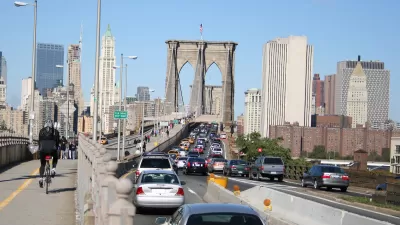In this Q&A, urban planning professor Mitchell Moss explains how budget crises at the federal, state and local levels will affect transit funding in New York City and other places.
Moss looks at a future of uncertain funding, but also new ideas for creating sustainable funding sources for transportation.
"The Shoshin Project: What does this environment mean for transportation policy?
Mitchell Moss: Transportation in New York is vital to our economic strength. We are able to bring hundreds of thousands of people in per day by commuter rail, by subway, by bus. In other words, we have an extremely sophisticated mass transit system. That system is dependent upon the fare box, upon revenues from the city and from the state, and one of the great challenges is to maintain that system in good repair. And that's very expensive. I think we have to appreciate that declining revenues from real estate transactions have severely hurt the MTA.
That means three things. We're seeing cutbacks in service, we've seen increases in fares, and we're seeing the need to find new sources of capital, whether that's tolls or different revenue streams, or that can be through private financing. But we're going to have to be more creative in gaining either revenue or productivity out of either the workforce or out of new technologies."
FULL STORY: Mitchell Moss: We've Got To Get Creative On Transit Funding

Manufactured Crisis: Losing the Nation’s Largest Source of Unsubsidized Affordable Housing
Manufactured housing communities have long been an affordable housing option for millions of people living in the U.S., but that affordability is disappearing rapidly. How did we get here?

Americans May Be Stuck — But Why?
Americans are moving a lot less than they once did, and that is a problem. While Yoni Applebaum, in his highly-publicized article Stuck, gets the reasons badly wrong, it's still important to ask: why are we moving so much less than before?

Using Old Oil and Gas Wells for Green Energy Storage
Penn State researchers have found that repurposing abandoned oil and gas wells for geothermal-assisted compressed-air energy storage can boost efficiency, reduce environmental risks, and support clean energy and job transitions.

Greening Oakland’s School Grounds
With help from community partners like the Trust for Public Land, Oakland Unified School District is turning barren, asphalt-covered schoolyards into vibrant, green spaces that support outdoor learning, play, and student well-being.

California Governor Suspends CEQA Reviews for Utilities in Fire Areas
Utility restoration efforts in areas affected by the January wildfires in Los Angeles will be exempt from environmental regulations to speed up the rebuilding of essential infrastructure.

Native American Communities Prepare to Lead on Environmental Stewardship
In the face of federal threats to public lands and conservation efforts, indigenous groups continue to model nature-centered conservation efforts.
Urban Design for Planners 1: Software Tools
This six-course series explores essential urban design concepts using open source software and equips planners with the tools they need to participate fully in the urban design process.
Planning for Universal Design
Learn the tools for implementing Universal Design in planning regulations.
Heyer Gruel & Associates PA
City of Moreno Valley
Institute for Housing and Urban Development Studies (IHS)
City of Grandview
Harvard GSD Executive Education
Salt Lake City
NYU Wagner Graduate School of Public Service
City of Cambridge, Maryland





























